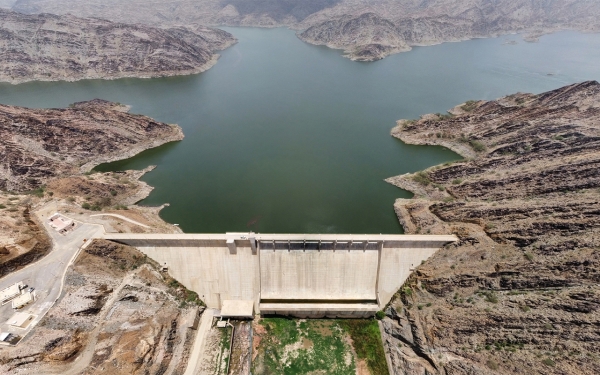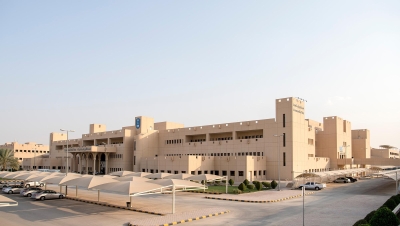
Baish Dam is a concrete dam built in 2009 and is the third-largest dam in the Kingdom of Saudi Arabia after King Fahd Dam and Wadi Hali Dam. It is 106 m high and 340 m long, with a storage capacity of 193.6 million m³. It is located in the southwest of the Kingdom, northeast of Jazan Province in specific.
Baish Dam production capacity
The dam was built to hold and control flood water and secure irrigation and drinking water. Moreover, water purification plants were installed to supply Aseer and Jazan Provinces with drinking water. The facilities produce up to 220 km³ of water per day.
In 2020, the reservoir in the dam lake reached approximately 148.8 million m³ of water, and the dam has four gates capable of discharging about twenty million m³ of water per day.
Baish Dam projects
Ministry of Environment, Water and Agriculture (MEWA) implemented several projects at the dam, including the implementation of a water transmission line from the dam to the water purification plant with a design capacity of 150,000 m³ per day and ten km long. This was to enhance water sources, meet demand growth due to population density, and support the Baish Dam water purification plant.
The draining process aims at securing drinking water for Jazan and Aseer Provinces, irrigating the farm beyond the dam’s lake, and increasing groundwater levels near the dam. In addition, it drains any water exceeding the dam’s strategic capacity of 140 million m³ to prepare for new rains and flash floods.
Water sources of Baish Dam
The Baish Valley, on which the dam was built, is approximately 155 km long. It is formed by the convergence of the Daffa and Dhubh valleys, which are among its main tributaries. The dam descends towards the Red Sea and is known for the clarity and diversity of its waters along the course beyond the dam, reaching the extensive farms that relied on its floods along the valley.
Related quizzes
Related articles


